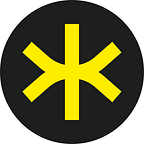Did you know that a staggering 55% of project failures could be dodged with some savvy planning and prototyping? Prototyping is one of the best practices for crafting apps and software products that work smoothly and resonate deeply with users from the start.
Why Prototype? 🧪
Prototyping is the heartbeat of innovation in app development, letting you test, tweak, and perfect your design ideas and functionality choices in a real-world setting before you go full throttle into production. This early model acts as your sandbox, where feedback rules and each iteration edges you closer to your dream app.
The Role of Prototyping in Product Development
In the software world, prototyping is a mainstay in agile methodologies, vital for syncing the final product with the business goals and what users want. It’s not just about trapping bugs, it’s about refining the user experience with solid feedback, ensuring your product really hits the spot. These findings will be especially handy when you’ll prepare the final design mockups of the solution, which will be given to the developers.
What’s Included in a Product Prototype?
A typical software prototype packs just the essentials:
🟢 Core functionality: only the crucial features needed to get the product up and running.
🟢 User interface (UI): streamlined versions of the UI to trial design and usability.
🟢 Interactivity: basic interactive elements to flesh out how the product will be handled.
🟢 Test data: sample scenarios to see how the product holds up under different conditions.
🟢 Feedback mechanisms: tools to scoop up user thoughts and suggestions for tweaks.
When to Prototype 🔬
Prototyping really shines in the discovery phase of the software development lifecycle. Here, it helps by:
- Understanding user needs: helps paint a picture and validate what the user actually wants.
- Concept validation: makes sure the project is viable before you pour in serious cash.
- Stakeholder engagement: gives stakeholders a solid peek at what’s brewing.
- Requirement refinement: lets you tune the product using feedback from stakeholders, teammates, and users.
Prototyping Benefits
Prototyping is non-negotiable in modern app development, thanks to a slew of benefits:
1️⃣ Early validation: saves time and cash by testing designs and functionalities upfront.
2️⃣ Enhanced user experience: early user tests fine-tune usability.
3️⃣ Improved stakeholder communication: makes discussing product directions and requirements clearer.
4️⃣ Cost efficiency: catches and fixes snags early, cutting down on expensive changes later.
5️⃣ Support for iterative development: a must-have for Agile and similar methodologies, allowing for ongoing enhancements.
Different Types of Prototypes 📐
From quick, cost-effective low-fidelity sketches to high-fidelity prototypes that deliver a slice of the real user experience, the range of prototypes can vary widely depending on the development stage and specific project needs. They might focus on:
- Functional: pinning down backend processes;
- Evolutionary: continuously iterating via user feedback;
- Throwaway: testing specific features before they’re tossed.
Need the Steps on How to Prototype Effectively?
Prototyping is a powerhouse for creating impactful, easy-to-use products. It’s all about making smart, informed choices that match user expectations and business needs, ensuring your app is not only functional but a pleasure to use. Keep reading to find tips, step-by-step instructions, and even a list of tools to help you start prototyping in no time ⤵️
